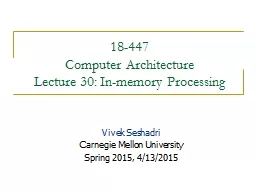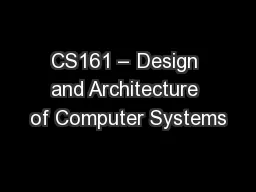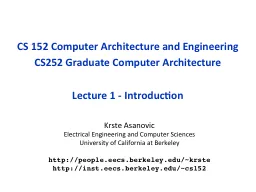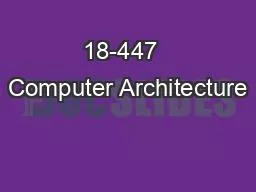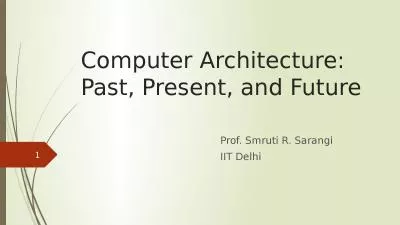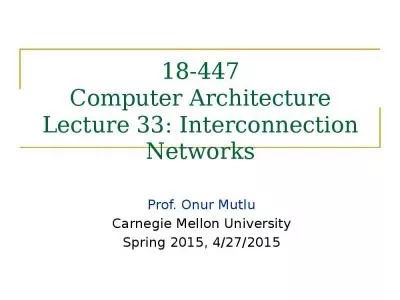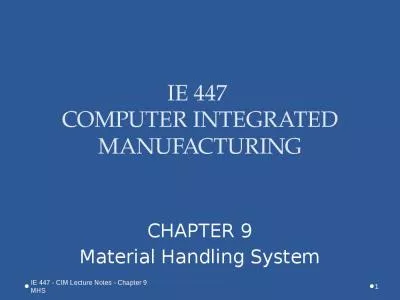PPT-18-447 Computer Architecture
Author : olivia-moreira | Published Date : 2020-01-30
18447 Computer Architecture Lecture 30 Inmemory Processing Vivek Seshadri Carnegie Mellon University Spring 2015 4132015 Goals for T his Lecture Understand DRAM
Presentation Embed Code
Download Presentation
Download Presentation The PPT/PDF document "18-447 Computer Architecture" is the property of its rightful owner. Permission is granted to download and print the materials on this website for personal, non-commercial use only, and to display it on your personal computer provided you do not modify the materials and that you retain all copyright notices contained in the materials. By downloading content from our website, you accept the terms of this agreement.
18-447 Computer Architecture: Transcript
Download Rules Of Document
"18-447 Computer Architecture"The content belongs to its owner. You may download and print it for personal use, without modification, and keep all copyright notices. By downloading, you agree to these terms.
Related Documents

